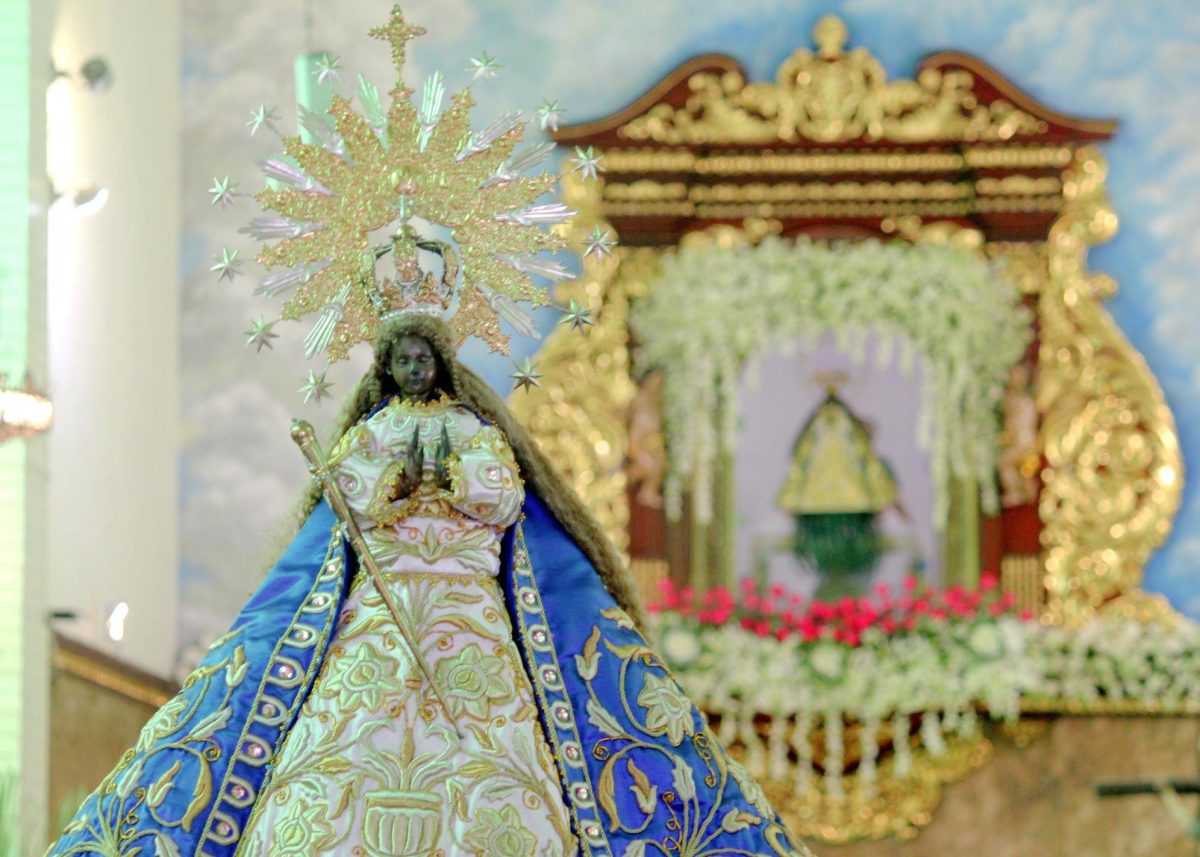MANY YEARS AGO the old church of Ermita, which then stood on the shore of Manila Bay, was burned by the invading forces of the British Navy. The church was the home of the ancient and cherished image of Our Lady of the Way, Nuestra Señora de Guía.
The people of the parish had saved the statue from the fire. For safekeeping, they brought it to the great Cathedral of Manila, there to stay while they rebuilt the church.
Soon the new church was built. The people of Ermita went to the Cathedral to claim the statue of Our Lady. But the Archbishop had decided to keep the precious image in the Cathedral for always. No matter how hard the people pleaded with him, he remained firm.
Every year, on the feast day of Nuestra Senora de Guia, the people of Ermita had to go across the Pasig River to the Cathedral. They brought many, many flowers with them. Each time they almost covered the statue with flowers. Many more were left. They threw these flowers into the air all around the altar of the Virgin. Surely the Archbishop could not help but notice how lavish the people were with the flowers that symbolized their love for the Mother of God. In time the pilgrimage to the Virgin in the Cathedral came to be known as a time of throwing flowers-bola fiores, as they say in Spanish.
Years later, the statue of Our Lady was finally returned to the Ermita church. But the people did not for get their flower pilgrimages. Each year great bouquets of flowers continued to be offered, and the feast-day procession itself came to be known as Bota Flores.
The statue of Nuestra Señora de Guía is one of the oldest religious images in the Philippines. Some legends say that it was discovered by the soldiers who came with the conquistador Miguel Lopez de Legaspi in 1571. The statue was supposedly found in a clump of pandan plants along the shore of the bay, where the church of Ermita still stands today.
Other stories say that the statue belonged to the people who lived in Manila long before the Spaniards came. They honored the statue as the image of a goddess. Because the statue has Oriental features; it was believed that it had come from China on the sailing junks of the merchants.
Another legend says that the statue came from Flanders, in northwestern Europe, and must have been brought by St. Francis Xavier in his travels throughout the ancient East. Only one thing is sure: the statue is more than 400 years old. Important dating tests show that the wood of the statue is more than four centuries old.
As early as 1591, Pope Gregory VI declared a Perpetual Jubilee for Ermita. He also declared Our Lady, as honored in Ermita, the “sworn patroness of the city of Manila.” Many years later, another Pope declared Our Lady the sworn patroness of the entire Philippines.
During the Spanish era the shrine of Our Lady in Ermita was very important to the people of Manila. From the old walled city of Intramuros during the afternoon, people traveled by horse-drawn carriages to visit the Ermita church. Some of the visitors were wealthy businessmen. They came to pray for the safety of the galleons that were carrying their goods across the Pacific Ocean to Mexico. Most of the rich people of Manila at that time depended on the galleon trade.
Because her protection was always asked for the galleons, Our Lady at the Ermita came to be known as Nuestra Senora de Guia, Our Lady of the Way. When the galleons arrived, there were grand welcoming processions with the statue of Nuestra Senora de Guia at the place of honor. When the galleons were delayed, the statue of Our Lady was brought in a procession to Manila Bay, like a mother looking for her child.
To thank Our Lady, many of the businessmen gave gifts of jewels and land. One of them donated a gold admiral’s baton, which the statue carries to this day. In 1971 Pope Paul VI gave a gift to Our Lady in Ermita – a gold crown which is also worn by the statue to this day.
The procession of Bota Flores is distinctly naval in theme. Little boys who march in the procession are in sailors’ suits. A group from the Philippine Navy provides the guard of honor, recalling the days when the galleon crew and men from the Spanish royal navy performed the service.
To represent the people of Ermita, a young girl is chosen each year to march in front of the carriage of Nuestra Senora de Guia. The girl is called Capitana after the captains of the galleons.
By tradition the Capitana comes from a wealthy family of Ermita. Her family is host for all festivities that year. The novenas, the Masses, the choirs, the bands, the lights and the procession, the family of the Capitana answers for all these and holds an open house on the day of the fiesta.
It is an honor to be chosen Capitana. It is also thought of as a way to thank Our Lady for the good fortunes of the family. The gratitude is shown by sharing that good fortune as freely as throwing flowers.






